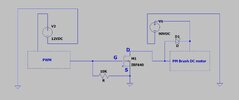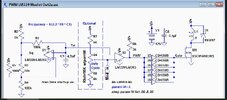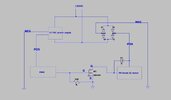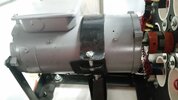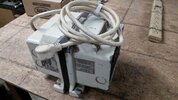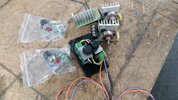I just completed a motor controller with a circuit provided by our most helpful member "crutschow". Thank you ! It works really well with a 100 watt bulb as a load so far. I would like to drive a 90vdc PM motor @ up to 6-8 amps. Now I`m kinda new at this but I know the havic this motor can cause with back EMF, transients, est. I have all components on a single board, 12vdc PS, FWBR and PWM. My concern is how the grounds are connected. Do I have this right? I have a 10k res. and schottky in there but what stops it at the source ? All suggestions and criticism welcome. Please advise. Thanks
Attachments
Last edited:
